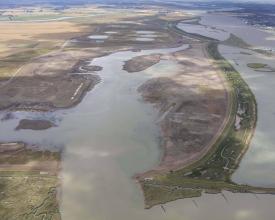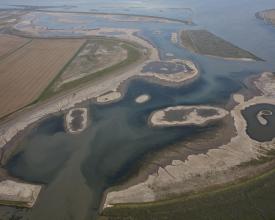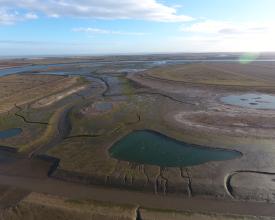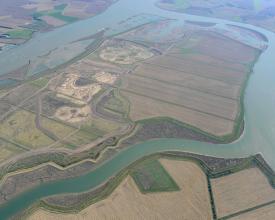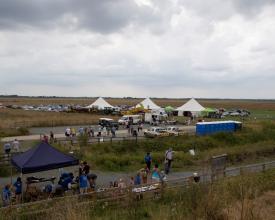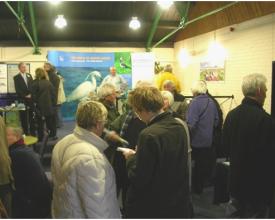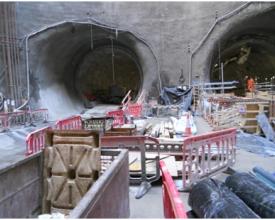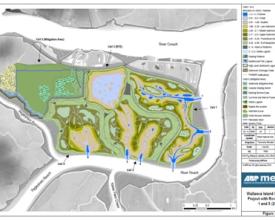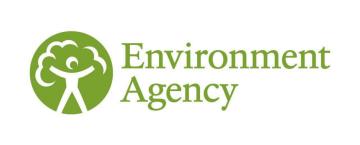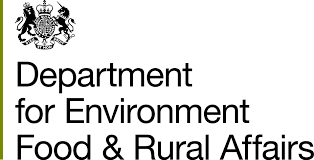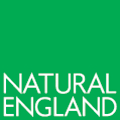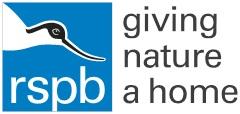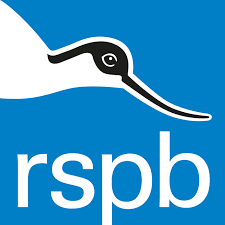
Wallasea Island Wild Coast Project – A landmark conservation and engineering scheme
Full Solution
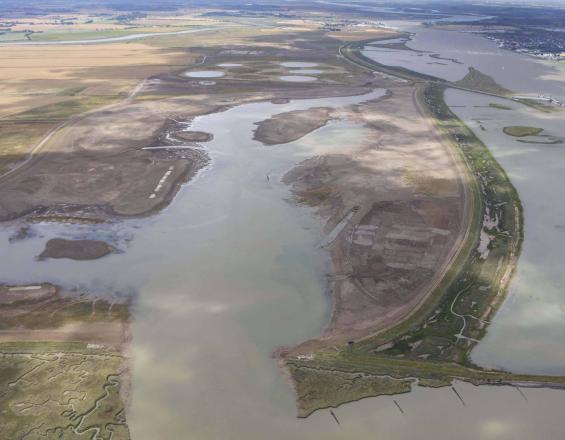
Jubilee Marsh 4 days after breaching - July 2015
RSPB
This habitat restoration project aimed to offset coastal habitat loss while reducing flood risk and transforming an area from a carbon source to sink. Phase 1 imported tunneling spoil from a new rail network under London to raise 165ha of low-productivity agricultural land and create 235ha of costal lagoon and grazing marsh habitat. Landscape engineering enabled controlled sea wall breaches and sea inundation, and biodiversity-rich habitat creation. Phase 2 will develop 280ha new habitat.
Last update: 21 Feb 2023
6786 Views
Context
Challenges addressed
The project responded to the impending threat of sea level rise and growing risk of floods to the local population, which could lead to future losses and damages. Regarding support, the public was largely content to create habitat, but there were a few objections which initially challenged the project implementation (principally to the loss of agricultural land and the potential impacts of recreational sailing and oyster fisheries).
Location
Wallasea Island, United Kingdom
North Europe
Process
Summary of the process
Extensive public engagement and consultation processes were carried out during the planning and incep-tion phases (building block 1) in order to address stakeholder concerns and generate support for the project. An innovative partnership between public and private entities also contributed to the projects success (building block 2) by thinking ‘outside the box’ and developing win-win solutions within the field of landscape engineering. Finally, given the complex and novel character of this solution, a technical advisory panel was established to ensure a sound planning and implementation (building block 3).
Building Blocks
Extensive public engagement/consultation during design phase
For Wallasea Island, the public was largely content with creating new habitat in place of low-productivity agricultural land, but objected to the loss of farmland and potential impacts on recreation sailing, oyster fisheries and estuary processes. Another issue was the sense that past generations had worked hard to reclaim these areas from the sea and that this should not be reversed. However, according to the Environment Agency’s flood risk maps, the project estimated that hundreds of years of such reclamations had resulted in thousands of hectares along the Essex coastline that should be inundated. Extensive public engagement and consultation processes were thus carried out during the planning and inception phases of this project to gain understanding and support. Public engagement took place in the form of consultation events, talks to interest groups, site visits for key stakeholders, new updates for involved stakeholders, the establishment of a Local Liaison Group and the appointment of a public engagement manager in April 2010.
Enabling factors
Public engagement during the design phase was particularly important to gain public support, as the project entailed destroying productive agricultural land in favor of habitat creation. Targeted outreach and dissemination activities helped to raise awareness and understanding of potential damaging climate change related impacts (i.e. flooding) and the range of benefits which would be offered by the project (e.g. recreational opportunities, flood risk management, increased amenity values etc).
Lesson learned
Early and comprehensive consultation are key to ensuring successful implementation and generating public support for many EbA projects, the extent of which depends on the sensitivity of the location and/or proximity of residential areas and socio-economic resources. In the case of Wallasea, early and frequent public consultations required significant education about potential climate change impacts and the risks of sea level rise in order to gain acceptance for the planned project activities.
Fostering win-win solutions through innovative partnerships for landscape engineering
Within the Wallasea Project, land-raising and landscape engineering was innovatively approached by creating a novel public private partnership. Materials from the Crossrail tunneling project were transported to a low-lying coastal area at high risk of flooding, in order to raise the land. The project thus established a precedent for using largely waste material generated by a major infrastructure project to meet biodiversity conservation and climate change adaptation aims elsewhere. Financing stemmed from both the private company Crossrail as well as from the Environment Agency, with all parties profiting due to the economic as well as environmental benefits set off by recycling the leftover materials. With Crossrail on board as a delivery partner, the project represents a partnership between Europe's largest civil engineering project and Europe's largest intertidal habitat creation project.
Enabling factors
Instead of paying to remove waste materials from tunnel construction, Crossrail opted to transport them to Wallasea Island. An unloading facility enabled the materials to be shipped and then distributed across the island to build the habitats. Crossrail covered most costs (e.g. land purchase and some staff costs), with the Environment Agency (RA) funding the rest. The EA `bought` into the project to deliver replacement habitats for areas impacted/lost within the local Natura 200 network.
Lesson learned
While sufficient buy-in was obtained by RSPB to buy the land, funds had not initially been collected to carry out the project itself. At this point, Crossrail came forward with an offer of materials and funding that permitted the project to move forward with more confidence. The main lesson learned is thus to think ‘outside the box’ and consider novel (public-private) partnerships to tap into previously unconsidered resources, and making sure to highlight the range of benefits which will be delivered to each party as a result of the project. Furthermore, a strong relationship with the landowner was particularly important in the early design phases of the project, as this led to the ability of RSPB to take out a two-year purchase option. This meant that, for a two-year period, RSPB could purchase the majority of the island if they decided to, and the price would be fixed at the beginning of this period, thereby creating some certainty surrounding the initial costs of the project.
Creating a technical advisory panel for sound planning
The project answers to a technical advisory panel (TAP), which meets every six months. This is comprised of a wide range of relevant stakeholders, both directly and indirectly affected by the project. Relevant parties include: Natural England, the Environment Agency (four or five individuals representing each of various arms of the EA that are involved – the environmental permitting team, the land drainage consent team, and the seawall maintenance team), the Crouch Harbour Authority, the local planning authority, Defra, the Essex County Council authorities, the Rochford District Council’s head of planning, Crossrail representatives, the RSPB, individuals from the Centre for Environment, Fisheries, and Aquacultural Sciences (local fisheries advisors), and the Wallasea Island landowner (Wallasea Farms Inc). This panel was a critical source of expertise and analysis during early implementation, and continues to provide advice as the project is completed on potential barriers and means to overcome these.
Enabling factors
The existence of the TAP provided an underlying sense of confidence in the planning and implementation process, in order to deal with foreseen barriers. The panel supported extensive modelling, environmental impact assessments, and redesign of solutions. In particular, the design of three smaller managed realignments rather than one large one helped to overcome the problem of scale which was faced in the project.
Lesson learned
In a project with such a high chance of technical barriers as in Wallasea Island, a technical advisory panel can be instrumental in a smooth and successful planning and implementation process. The function is essentially to support the identification of both technical and regulatory barriers and development of means to overcome these prior to project implementation.
Impacts
The project safeguards communities and local wildlife from rising sea levels, including providing a habitat for the arrival of species from further south in Europe, such as Black-winged Stilt, which are expected to colonise southern England as the climate continues to change. It also created education and recreation opportunities for the surrounding community and serves as a tourist destination more broadly. The project was designed on the basis of an estimated 1m of sea level rise over the next 100 years, and is intended to be ‘climate proof.’ It is anticipated that the project will be robust, whether sea level rise is very rapid or rather slow. If sea levels rise rapidly, there will be a lot of coastal erosion and a lot of sediment in the system. Consultation events, discussions with interested parties and the instigation of a Local Liaison Group combined with education about the potential impacts of climate change and the risks of sea level rise have ensured widespread support for the project.
Beneficiaries
The primary beneficiaries are birds, fish, invertebrates and plants benefit from the restored ecosystem. The local community benefits from opportunities for recreation and education, and the local landowners are protected from future flooding events.
Sustainable Development Goals
SDG 3 – Good health and well-being
SDG 6 – Clean water and sanitation
SDG 13 – Climate action
Story

Jubilee Marsh 4 days after breaching - July 2015
RSPB
I started working on the Wallasea Island Wild Coast Project in 2000, taking on the Project Manager role in 2008. We finally breached the seawalls of Phase one of the project on 11 July 2015, creating the 165ha Jubilee Marsh. The sight of water entering Wallasea Island for the first time (in a controlled way) for around 450 years was an amazing experience. The water moved very slowly over the ground at around 1m/second but very soon the whole area was covered and behaving exactly as planned. 16 months on, the site is supporting around 15,000 wintering birds, with the expectation that the area will support around 22,000 birds in winter three.
